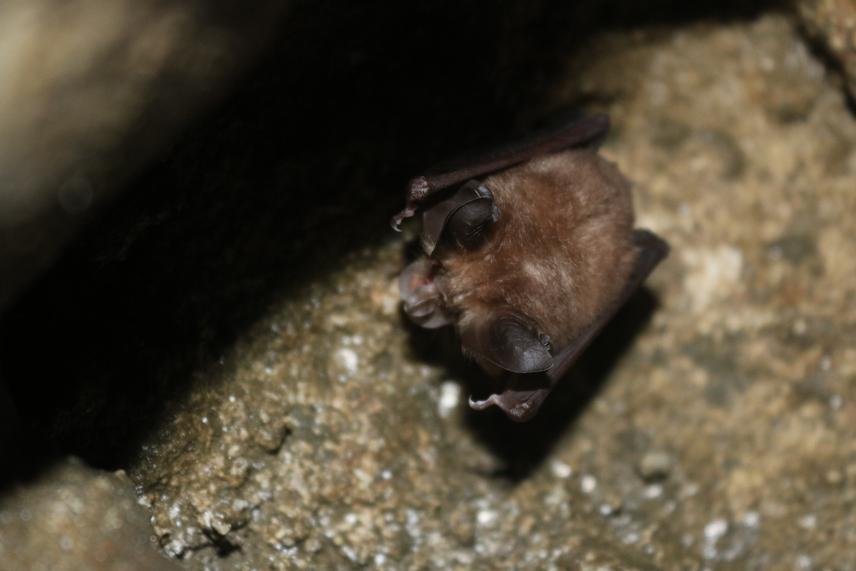Sanjeev Baniya
Autecological research of bat species is rare in Nepal. The endemic bat, Myotis csorbai was identified from a single cave roost- Kailash cave, Central Nepal in 1997. Till date no newer roost has been identified for this species. This project intends to use both passive and active acoustic monitoring along different habitat patches around the roost site to identify foraging habitat and use. Roost surveys would help define the micro climatic preference, assess the roost characteristics (cave length, cave height, cave width, number of entrances) and monitor seasonal fluctuation in bat species richness and abundance. The major conservation aims are to develop eco-clubs, empower citizen scientist and cave management committees through species conservation guidelines and trainings and raise awareness using posters, brochures and newspaper articles. Ultimately, through this research we intend to describe and disseminate foraging and roosting ecology of this endemic bat and thus, lay a foundation for conservation.

Rhinolophus sps in deep torpor, February, 2020, an exploratory field study.
Autecological study of bats is very rare in Nepal. A holotype record (Topal 1997), voucher specimen collection (Csorba et al. 1999), morphometric verification note (Thapa and Thapa, 2010), specimen collections in Kathmandu (Pearch 2011) and brief acoustic note (Thapa 2018) has been the extent of published research on endemic Nepalese bat Myotis csorbai. Recent surveys of accessible caves in neighboring districts of Kailash cave (only known cave roost) did not show any evidence of occurrence of this species (Sharma 2018). Although considered “Critically endangered” nationally (Gnawali 2008), information on its ecology is very limited. This has led the IUCN red list to list it as “Data Deficient” (Csorba and Thapa, 2016). Through this project, we intend to study the foraging and roosting ecology of this endemic bat and hence, lay a foundation for its conservation. The aims of this project are-
a) Scientific aims-
This study will provide information on various call parameters such as maximum frequency, minimum frequency, call duration, peak frequency, call intervals and call curvature of the study species and its co-inhabitants, and thus develop a call library. Although there is a Zero Crossing (ZC) call reference of Myotis csorbai (Thapa 2018), it is important to have several recordings in different levels of clutter and preferably in Full Spectrum (FS) to build an acoustic classifier. We aim to study its foraging habitat through passive acoustic monitoring (Audiomoths), active acoustic monitoring (Wildlife acoustic Echometer touch 2 pro) and bat capture (mist netting, harp trapping). The acquired acoustic, roost and habitat information will be crucial for further exploratory surveys of the species elsewhere in Nepal. Roost surveys will yield information on seasonal colony monitoring, cave characteristics and micro climatic preference. All this ecological information will be pivotal to develop conservation action plan in future.
b) Conservation aims-
Conservation of this known colony and its cave roost is urgent as the locals are promoting the cave as touristic site. We need to identify the best suited habitats and recommend the mitigation measures to protect the species and its habitat. Posters, group discussions, seminars and eco-clubs will help disseminate knowledge and establish conservation motive in the cave surrounding. Trainings to the cave management committee and citizen scientist and species conservation guideline will allow in long term conservation and monitoring of the species and its habitat. Printed conservation materials will be useful to educate cave visitors, villagers, schoolteachers and students.